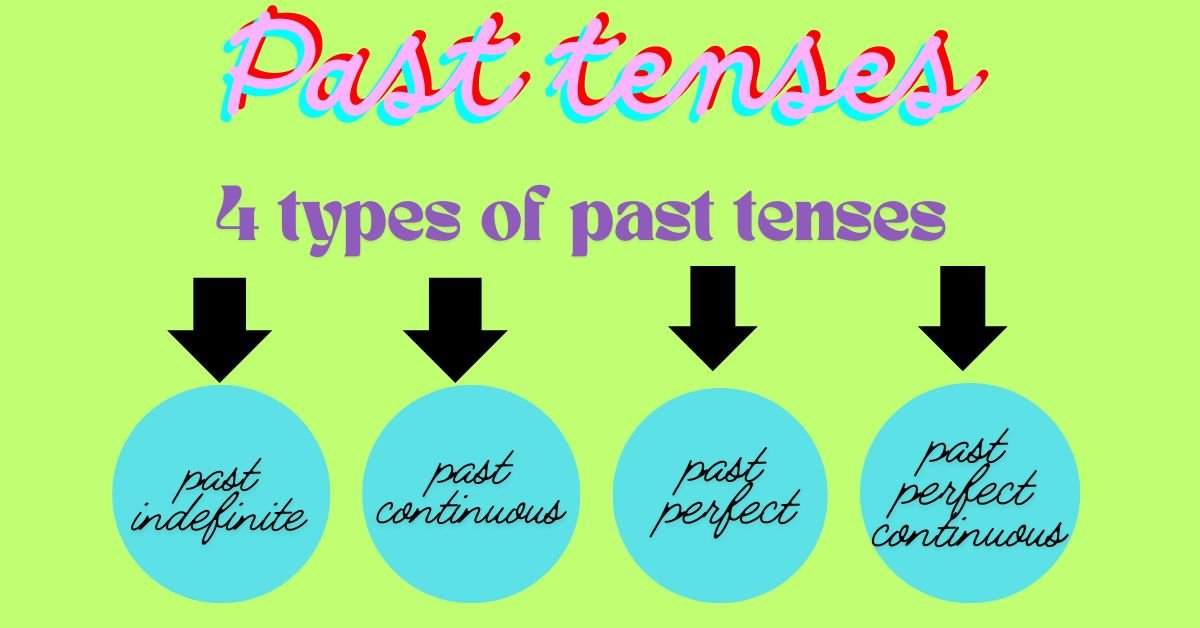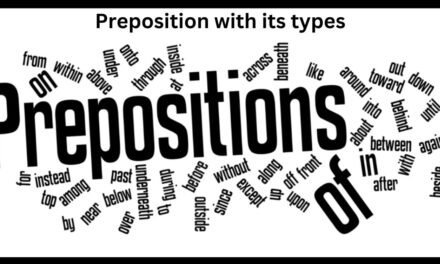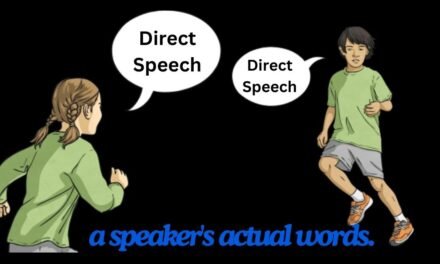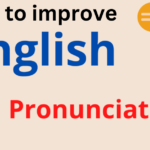Past tenses
The past tense was the workhorse of verb tenses in English. It was what we used to talk about everything happening at a specific point in time, from the cup of coffee you were sipping to the habits you followed every day. But there was more to the past tense than met the eye. In this guide, we delved into the four main forms of the past tense, untangling their uses and helping you master them like a pro.
Confused by when to use “was working” versus “worked”? You weren’t alone! English had a surprisingly rich set of past tenses, each with its specific purpose. Understanding these nuances could take your grammar from good to great. Let’s explore the fascinating world of past tenses and unlock the secrets of clear and confident communication.
Imagine you were telling a story. If you jump between tenses constantly, it could be confusing for the listener. Tenses helped you establish a clear timeline for your communication, whether it was a conversation, a story, or a written piece. Using the correct tense kept things flowing smoothly and allowed the listener or reader to understand the sequence of events and the relationship between them.
Importance of past tenses
- No More Confusing Stories: Imagine telling a story where you jumped between “yesterday,” “right then,” and “tomorrow” all over the place. It was like a confusing traffic jam for your listener’s brain! The past tenses were like traffic signals. They kept your communication organized, so listeners could easily understand the order of events and how they connected.
- Saying Exactly What You Meant: The past tense wasn’t a one-size-fits-all situation. Think about it like having different tools in your toolbox. Did you want to brag about your daily jog routine? The “past indefinite” was your perfect tool! Needed to describe the delicious dinner you were making at that very moment? The “past continuous” jumped in to help. Knowing these different tenses lets you choose the right one for the job, ensuring your message is understood exactly as you intended.
- Painting a Picture with Your Words: The past tense could take your descriptions from boring to brilliant! Whether you were talking about the regular rhythm of your morning coffee ritual or the excitement of a party you were planning, the past tense lets you capture the feeling of the moment. It was like a time machine for your words, transporting your listener right into the scene you were describing.
Past Tenses types
Ever feel lost navigating the nuances of talking about the past? Fear not! Past tenses, though seemingly complex, offer a clear roadmap for discussing bygone events.
We have four key players: the simple past, perfect for pinpointing completed actions (“I visited Paris last summer”). The past continuous steps in to depict ongoing actions at a specific time in the past (“While I was waiting for the bus, it started to rain”).
The past perfect acts as a bridge, connecting a past action to another past event (“She had already graduated before I started college”). Finally, the past perfect continuous describes actions that began in the past, continued for a while, and might still have lingering effects (“My muscles had been aching for days after the intense workout”). Mastering these tenses empowers you to express yourself with remarkable clarity and paint vivid pictures of the past.
While the present tense might seem like the king of the verb kingdom, the past tenses offer a rich tapestry for weaving stories and describing events gone by. Let’s delve into the four main past tenses, each with its unique purpose:
1. Past indefinite tense
- Definition: The past indefinite reigned supreme when it came to depicting completed actions in a bygone era. It pinpoints a specific time in the past, making it perfect for creating timelines and recounting events.
- Where it Shined: Imagine describing a historical event, a personal anecdote, or a completed task. The past indefinite bathes these scenarios in the light of clarity.
- How to Wield It: The formula is subject + past tense verb form. For regular verbs, the past tense is usually formed by adding “-ed” to the base form. Irregular verbs have their own unique past tense forms, so memorization is key!
Examples of past indefinite tense(simple)
- The dinosaurs roamed the Earth millions of years ago.
- I baked a delicious cake yesterday.
- We finished our homework before dinner.
Examples of past indefinite tense(negative)
- The dinosaurs didn’t roam the Earth millions of years ago.
- We didn’t finish our homework before dinner.
- I didn’t bake a delicious cake yesterday.
2. Past Continuous tense
- Definition: The past continuous stepped into the spotlight when it came to depicting actions that were ongoing at a specific point in the past, emphasizing their duration rather than their completion. Imagine a movie scene – the past continuous paints a picture of what was happening in that exact moment.
- Where it Took Center Stage: This tense thrives when describing events that were interrupted, actions happening simultaneously in the past, or setting the scene for a past event.
- How to Command It: Combine the subject with the past tense of “to be” (was/were) followed by the verb’s present participle form (ending in “-ing”).
Examples of past continuous tense(simple)
- I was cooking dinner in the evening.
- The children were playing in the park when we arrived.
- It was raining heavily as we walked to school.
Examples of past continuous tense(negative)
- I wasn’t cooking dinner in the evening.
- The children weren’t playing in the park when we arrived.
- It wasn’t raining heavily as we walked to school.
3. Past Perfect tense
- Definition: The past perfect acted as a bridge, connecting actions completed at some indefinite time in the past to another past event. It highlights the sequence of events, showing which happened first.
- Where it Found Its Calling: This tense shines when discussing past experiences, achievements before a specific point in time, or completed actions with a lasting impact on the past.
- How to Master It: The formula involves the subject followed by “had” or “hadn’t” depending on the subject, and then the past participle of the verb.
Examples of past perfect tense(simple)
- I had eaten dinner before I went to the movie.
- She had never traveled abroad before her college trip.
- The house had stood empty for years before they renovated it.
Examples of past perfect tense(negative)
- I hadn’t eaten dinner before I went to the movie.
- She hadn’t already traveled abroad before her college trip.
- The house hadn’t stood empty for years before they renovated it.
4. Past Perfect Continuous tense
- Definition: The past perfect continuous took the concept a step further. It described actions that began in the past, continued up to a specific point in the past, and possibly had lingering effects.
- Where it Took the Spotlight: Imagine describing an ongoing project that was eventually halted, or the effects of a long-term past activity. This tense brings those situations to life.
- How to Employ It: The formula involves the subject followed by “had been” or “hadn’t been” depending on the subject, and then the verb’s present participle form (ending in “-ing”).
Examples of past perfect continuous tense(simple)
- The students had been studying for weeks before the final exam.
- My muscles had been aching for days after the marathon.
Examples of past perfect continuous tense(negative)
- The students hadn’t been studying for weeks before the final exam.
- My muscles hadn’t been aching for days after the marathon.
By mastering these four past tenses, you’ll unlock the secrets of clear and vivid past communication. Remember, the choice of tense depends on the specific situation and the story you want to tell. So, explore these tenses, practice using them, and watch your ability to describe the past flourish!
Conclusion
The world of communication extends far beyond the present moment. Past tenses offer a powerful toolbox for recounting experiences, weaving narratives, and transporting listeners or readers back in time. By mastering these four distinct tenses – simple past, past continuous, past perfect, and past perfect continuous – you gain the ability to express yourself with remarkable clarity and precision.
Each tense serves a unique purpose. The simple past shines when pinpointing completed actions in a bygone era, while the past continuous paints a vivid picture of ongoing actions at a specific point in the past. The past perfect acts as a bridge, connecting past events to a specific reference point, and the past perfect continuous delves deeper, describing actions that began in the past, continued for a duration, and potentially had lingering effects.
Unleash the power of the past! In this guide, we’ll delve into the fascinating world of past tenses, equipping you with the tools to navigate the tapestry of time in your communication. So, the next time you find yourself reminiscing about a past adventure, describing a historical event, or setting the scene for a story, remember these past-tense heroes. With a little practice, you’ll be weaving tales of the past with the confidence of a seasoned storyteller!










Great site. Lots of useful info here. I’m sending it to several friends ans also sharing in delicious. And certainly, thanks for your effort!
Its such as you read my mind! You appear to understand a lot approximately this, such as you wrote the guide in it or something. I think that you simply could do with a few p.c. to power the message home a bit, but other than that, that is fantastic blog. An excellent read. I’ll definitely be back.
You actually make it appear really easy together with your presentation however I to find this topic to be actually one thing that I believe I’d never understand. It kind of feels too complex and very large for me. I’m taking a look forward in your next post, I will try to get the grasp of it!
Glad to be one of several visitants on this amazing web site : D.